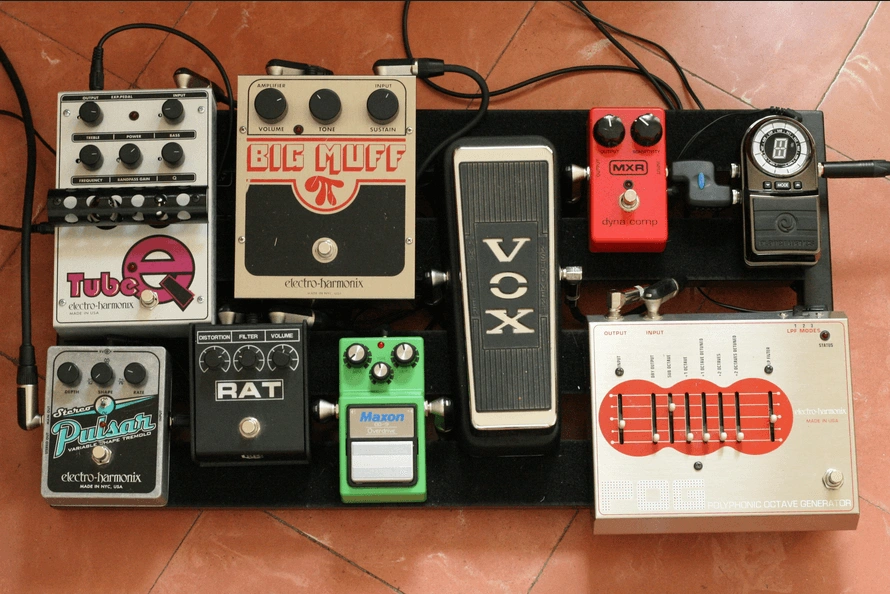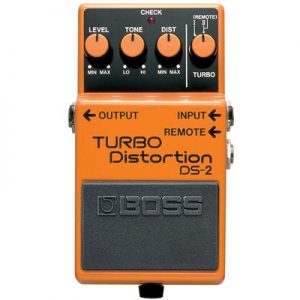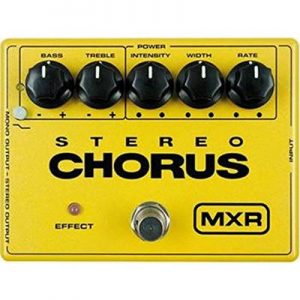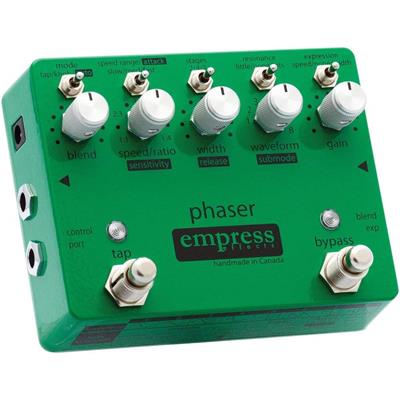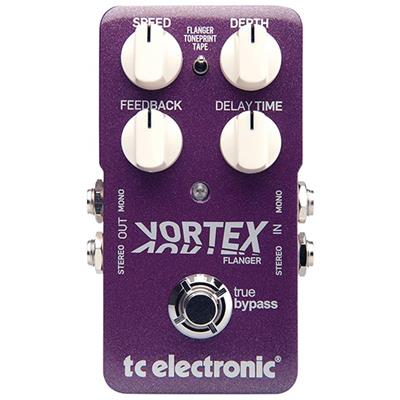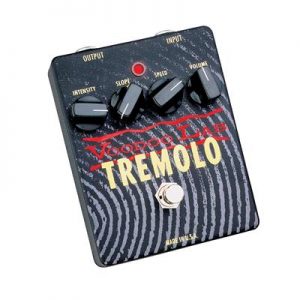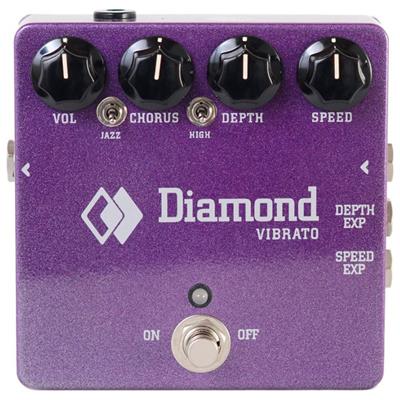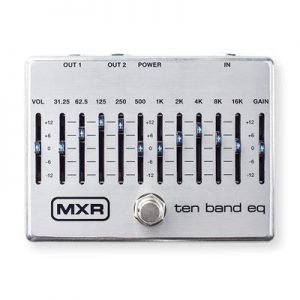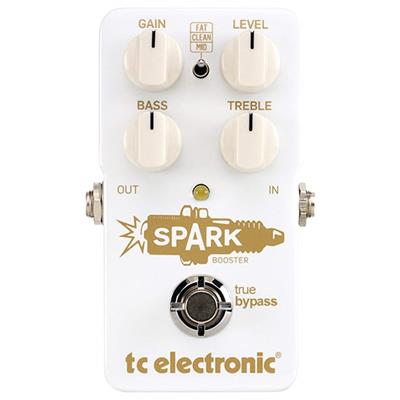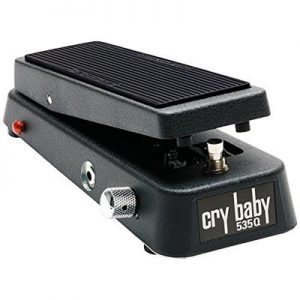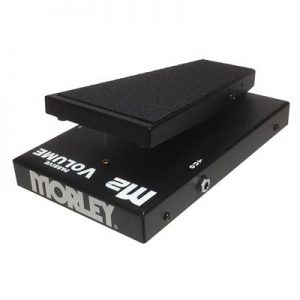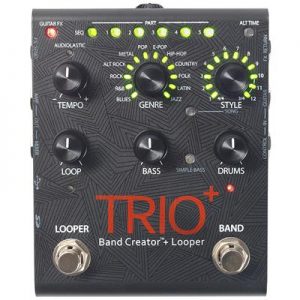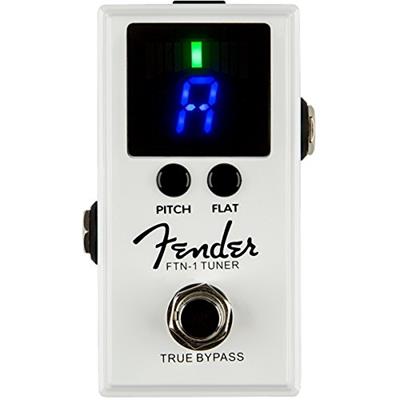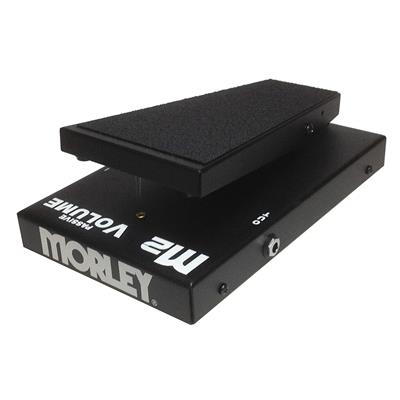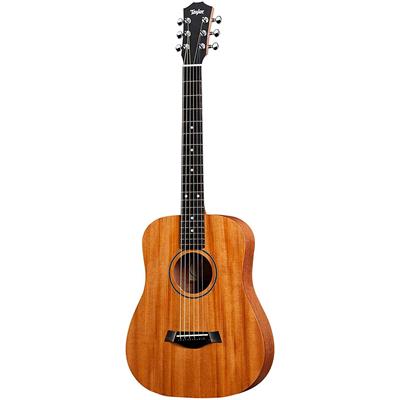Introduction: Discover the World of Guitar Effects
Guitar effects pedals are powerful tools that can completely transform your sound, taking your playing from ordinary to extraordinary. Whether you’re a beginner guitarist looking to expand your sonic palette or an experienced player seeking to refine your tone, understanding different effects pedals is essential for developing your unique musical voice.
Effects pedals work by modifying your guitar’s electrical signal before it reaches your amplifier. Each pedal serves a specific purpose, from adding gritty distortion to creating ethereal reverb trails. The beauty of effects pedals lies in their versatility – you can use them individually for subtle enhancements or chain them together to create complex, layered soundscapes.
In this comprehensive guide, we’ll explore the most important types of guitar effects pedals, explain how they work, and help you understand which pedals might be perfect for your musical style and goals.
Gain Stage Effects: The Foundation of Your Tone
Gain stage effects, also known as drive pedals, form the backbone of most guitarists’ pedalboards. These effects primarily alter the amplitude and harmonic content of your guitar signal, creating everything from subtle warmth to aggressive saturation.
Distortion Pedal
What it does: Distortion pedals create more aggressive clipping than overdrive, resulting in a heavily saturated signal with increased sustain and harmonics. They typically provide more gain and compression than overdrive pedals.
Best used for: Hard rock, punk, metal, and any genre requiring aggressive, cutting tones. Distortion excels at both heavy rhythm playing and soaring lead work.
How it sounds: From the crunchy power chords in AC/DC’s “Back in Black” to the soaring leads in guitar solos from classic metal anthems, distortion provides the raw power that drives rock music.
Key features:
- Gain: Determines distortion intensity
- Level: Controls output volume
- EQ controls: Shape bass, midrange, and treble frequencies
- Boost switch: Adds extra gain for lead passages
Overdrive Pedal
Overdrive Pedals: Classic Tube Amp Warmth
What it does: Overdrive pedals simulate the natural saturation that occurs when a tube amplifier is pushed beyond its clean headroom. This creates a warm, musical distortion that compresses your signal and adds harmonic richness.
Best used for: Blues, classic rock, country, and any style where you want to add warmth and sustain without overwhelming aggression. Overdrive works exceptionally well for rhythm playing and solos that need to cut through a mix.
How it sounds: Think of the creamy lead tones in songs like “Layla” by Eric Clapton or the chunky rhythm sounds in Tom Petty’s catalog. Overdrive adds character without masking your guitar’s natural voice.
Key controls to look for:
- Drive/Gain: Controls the amount of saturation
- Level/Volume: Sets the output volume
- Tone: Shapes the frequency response
- Blend: Mixes clean and overdriven signals (on some models)
Fuzz Pedal
What it does: Fuzz pedals create a distinctive form of distortion characterized by heavy compression, sustain, and a “fuzzy” texture. Unlike modern distortion, fuzz often sounds somewhat unstable and reactive to your playing dynamics.
Best used for: Psychedelic rock, garage rock, blues-rock, and vintage-inspired tones. Fuzz works particularly well with single-coil pickups and responds dramatically to guitar volume changes.
How it sounds: The iconic fuzz sound appears in classics like “Satisfaction” by The Rolling Stones, “Purple Haze” by Jimi Hendrix, and countless garage rock recordings from the 1960s.
What makes fuzz special:
- Responds to guitar volume knob adjustments
- Creates unique harmonic interactions
- Often features germanium or silicon transistors for different flavors
- Can clean up dramatically when you roll back your guitar’s volume
Time-Based Effects: Adding Space and Dimension
Time-based effects manipulate the timing of your guitar signal, creating echoes, ambiance, and spatial effects that can make your guitar sound larger than life.
Delay Pedal
Delay Pedals: Echo and Rhythmic Enhancement
What it does: Delay pedals record your guitar signal and play it back after a specified time interval. This creates echo effects that can range from subtle doubling to dramatic repeats that fill the space between your notes.
Types of Delay:
- Digital delay: Clean, precise repeats with long delay times
- Analog delay: Warmer, slightly degraded repeats that sound more musical
- Tape delay: Emulates vintage tape echo machines with characteristic modulation
Essential controls:
- Delay Time: Sets the interval between repeats
- Feedback/Repeats: Controls how many echoes you hear
- Mix/Level: Balances dry and delayed signals
- Tap Tempo: Syncs delay time to song tempo
Creative applications:
- Slapback delay for rockabilly and country
- Long delays for ambient soundscapes
- Short delays for doubling effects
- Rhythmic delays that complement your playing
Reverb Pedal
Reverb Pedals: Natural Ambiance and Space
What it does: Reverb simulates the natural reflections that occur when sound bounces off surfaces in different acoustic environments. It adds depth and dimension to your tone without the distinct repetitions of delay.
Types of Reverb:
- Hall reverb: Large, spacious reflections
- Room reverb: Intimate, smaller space ambiance
- Plate reverb: Vintage studio effect with bright character
- Spring reverb: Classic surf and rockabilly sound
- Shimmer reverb: Adds octave-up harmonies for ethereal effects
When to use Reverb:
- Ballads and slower songs benefit from longer reverb tails
- Surf music traditionally uses spring reverb
- Ambient and post-rock styles often employ shimmer reverb
- Short room reverb adds polish to any clean tone
Modulation Effects: Movement and Animation
Modulation effects add movement to your sound by continuously varying certain parameters. These effects can make your guitar sound more animated and interesting.
Chorus Pedal
What it does: Chorus splits your signal, slightly delays one copy, and modulates its pitch before mixing it back with the original. This creates the illusion of multiple instruments playing together.
Best applications:
- Clean arpeggios and chord progressions
- 1980s-style rock and pop tones
- Adding richness to single-note lines
Controls explained:
- Rate: Speed of the modulation
- Depth: Intensity of the pitch variation
- Mix: Balance of dry and chorused signals
Phaser Pedal
Phaser Pedals: Swooshing Movement
What it does: Phasers split your signal and pass one copy through a series of all-pass filters before recombining them. This creates moving notches in the frequency spectrum, resulting in a distinctive swooshing sound.
Famous examples: Eddie Van Halen’s “Unchained,” Pink Floyd’s atmospheric textures, and countless funk recordings showcase phaser’s rhythmic potential.
Key parameters:
- Rate: Speed of the sweep
- Depth: Intensity of the effect
- Feedback/Resonance: Adds emphasis to the sweep
Flanger Pedal
Flanger Pedals: Jet Plane Swooshes and Movement
What it does: Flangers create a distinctive swooshing effect by mixing your original signal with a slightly delayed copy whose delay time is continuously modulated. This creates moving comb filtering that produces the characteristic “jet plane” sound.
How it differs from chorus and phaser:
- More dramatic and noticeable than chorus
- Creates sharper, more defined sweeps than phaser
- Can produce metallic, resonant tones
- Often includes feedback controls for more intense effects
Musical applications:
- Classic rock solos: Think “Barracuda” by Heart
- Psychedelic textures: Adds movement to sustained chords
- Electronic and experimental music: Creates otherworldly soundscapes
- Special effects: Dramatic builds and transitions
Essential controls:
- Rate: Speed of the sweep
- Depth: Intensity of the modulation
- Feedback/Regen: Adds resonance and emphasis
- Manual/Range: Sets the center frequency of the sweep
Usage tip: Flanger can be overwhelming, so start with subtle settings and gradually increase intensity to find your sweet spot.
Tremolo Pedal
Tremolo Pedals: Volume Modulation
What it does: Tremolo rapidly varies your guitar’s volume, creating a rhythmic pulsing effect. It’s one of the oldest guitar effects and remains popular across many genres.
- Musical applications:
- Surf music (classic spring reverb tank tremolo)
- Country and rockabilly rhythms
- Ambient textures and soundscapes
- Adding movement to clean chord progressions
Vibrato Pedal
Vibrato Pedals: Pitch-Based Movement and Musicality
What it does: Vibrato creates a musical wobbling effect by continuously varying the pitch of your signal up and down. This creates a more natural, vocal-like modulation compared to tremolo’s volume-based approach.
Key differences from tremolo:
- Vibrato: Modulates pitch (frequency)
- Tremolo: Modulates volume (amplitude)
- Vibrato sounds more musical and organic
- Often more subtle but equally expressive
Musical contexts:
- Ballads and slow songs: Adds emotional expression to sustained notes
- Surf music: Classic vibrato-drenched lead tones
- Jazz and blues: Mimics natural vocal vibrato
- Ambient music: Creates floating, ethereal textures
Controls explained:
- Rate/Speed: How fast the pitch oscillates
- Depth/Intensity: How much the pitch varies
- Rise time: How quickly the effect reaches full intensity (on advanced models)
- Waveform selection: Different modulation shapes (sine, triangle, etc.)
Utility and Dynamic Effects
These pedals may not be as immediately obvious as distortion or delay, but they’re often the secret weapons that make professional recordings and performances sound polished and controlled.
Compressor Pedals: Evening Out Your Dynamics
- What it does: Compressors reduce the dynamic range of your signal by automatically lowering the volume of loud peaks and potentially boosting quieter passages. This results in more even, controlled playing.
- Benefits for guitarists:
- Sustain enhancement for lead playing
- Tighter rhythm guitar performance
- Consistent volume levels during complex passages
- Improved note clarity and definition
- Key controls:
- Threshold: Level at which compression begins
- Ratio: Amount of gain reduction applied
- Attack: How quickly compression engages
- Release: How quickly compression disengages
- Make-up Gain: Restores volume lost to compression
Noise Gate Pedal
Noise Gate Pedals: Eliminating Unwanted Sounds
What it does: Noise gates automatically mute your signal when it falls below a set threshold, effectively eliminating hum, buzz, and feedback during quiet passages.
Essential for:
- High-gain distortion setups
- Noisy vintage amplifiers
- Live performance situations
- Recording environments with electrical interference
EQ Pedals: Surgical Tone Shaping
- What it does: Equalizer pedals allow you to boost or cut specific frequency ranges, giving you precise control over your guitar’s tonal balance.
- Common EQ types:
- Graphic EQ: Fixed frequency bands with sliders
- Parametric EQ: Adjustable frequency selection and bandwidth
- 3-band EQ: Simple bass, mid, and treble controls
Strategic placement:
- Before distortion: Shapes what frequencies get distorted
- After distortion: Corrects or enhances the distorted signal
- End of chain: Final tone sculpting before the amplifier
Boost Pedals: Clean Volume and Signal Enhancement
What it does: Boost pedals increase your signal level without adding distortion or coloration, though they can push your amplifier into natural overdrive when used aggressively. They’re among the most versatile and useful pedals on any pedalboard.
Types of boost:
- Clean boost: Pure volume increase with minimal coloration
- Treble boost: Emphasizes high frequencies for clarity and cut
- Mid boost: Pushes midrange frequencies for solo presence
- Full-range boost: Even increase across the frequency spectrum
Strategic applications:
- Solo boost: Cut through the mix during lead passages
- Amp pushing: Drive tube amps into natural saturation
- Signal compensation: Overcome volume loss from long cable runs
- Always-on tone enhancement: Subtle improvements to your base tone
Placement considerations:
- Early in chain: Pushes subsequent pedals harder
- After drive pedals: Increases overall volume without changing distortion character
- Before amp: Drives the preamp section for natural tube overdrive
Specialized Effects for Creative Expression
- Wah Pedals: Expressive Frequency Sweeping
- What it does: Wah pedals use a foot-controlled potentiometer to sweep through a band-pass filter, creating the classic “wah-wah” vocal-like effect.
- Techniques and applications:
- Auto-wah: Creates rhythmic filter sweeps
- Cocked-wah: Parked in one position for a fixed filter effect
- Talk-box effects: Mimicking vocals
- Musical styles:
- Funk rhythm guitar (think “Theme from Shaft”)
- Rock and blues lead work (Jimi Hendrix, Eric Clapton)
- Experimental and psychedelic music
Volume Pedals: Precision Control at Your Feet
- What it does: Volume pedals provide hands-free control over your guitar’s output level using a foot-operated expression mechanism. Unlike simple volume knobs, quality volume pedals maintain signal integrity while offering smooth, musical volume swells and cuts.
Key applications:
- Volume swells: Create violin-like fade-ins for ambient textures
- Dynamic performance control: Adjust levels during different song sections
- Signal routing: Some models include tuner outputs or A/B switching
- Creative expression: Use with delays and reverbs for ethereal effects
Important features to consider:
- Taper curve: Determines how volume responds across the pedal’s range
- Minimum volume setting: Allows you to set the lowest volume level
- Signal path quality: Premium models use optical or magnetic control to preserve tone
- Tuner output: Enables silent tuning during performances
Pro tip: Place volume pedals after drive effects but before time-based effects like delay and reverb for the most musical results.
Octave Pedals: Pitch Shifting Adventures
- What it does: Octave pedals generate notes that are one or two octaves higher or lower than what you’re playing, often blending them with your original signal.
- Types available:
- Octave up: Adds higher octaves for organ-like tones
- Sub-octave: Adds lower octaves for massive low-end
- Polyphonic: Tracks chords accurately
- Monophonic: Best for single-note lines
Looper Pedals: Your Personal Band Member
- What it does: Loopers record passages you play and immediately play them back on repeat, allowing you to layer multiple parts and create complex arrangements in real-time.
- Creative possibilities:
- Practice tool for playing over chord progressions
- Live performance enhancement for solo artists
- Songwriting and arrangement exploration
- Building complex sonic textures
Essential features:
- Record/Overdub: Captures and layers new material
- Play/Stop: Controls playback
- Undo/Redo: Removes or restores the last overdub
- Reverse: Plays loops backward for special effects
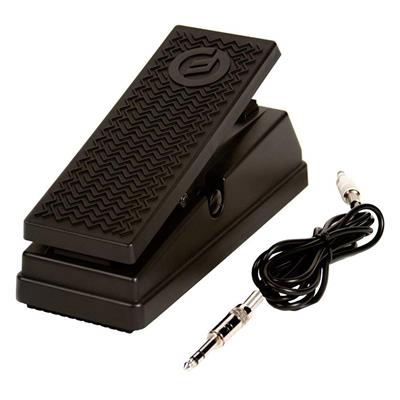 An expression pedal is more like an additional tool rather than an individual effect. It does not interfere with your sound at all, which is the reason why it is often overlooked. For me, an expression pedal means more control, flexibility and ease of use. It is basically a knob in the form of a stompbox. You can plug it in any compatible pedal and modify the desired parameter. It eliminates the need to constantly reach for your units during live performance and allows you to adjust everything on the fly. If you have been on stage at least once, you know how important that can be. For this reason, an expression pedal will be a significant asset for any musician.
An expression pedal is more like an additional tool rather than an individual effect. It does not interfere with your sound at all, which is the reason why it is often overlooked. For me, an expression pedal means more control, flexibility and ease of use. It is basically a knob in the form of a stompbox. You can plug it in any compatible pedal and modify the desired parameter. It eliminates the need to constantly reach for your units during live performance and allows you to adjust everything on the fly. If you have been on stage at least once, you know how important that can be. For this reason, an expression pedal will be a significant asset for any musician.
Since this unit is quite straightforward, it is hard to articulate which features make up the best expression pedal. They do not offer a lot of versatility and mostly come with tapers (they look similar to volume pedals and wahs). However, there are certain models that have some additional properties. For instance, some of them can combine volume pedal functionality, which means you will get two-in-one deal. Some of them might have a Polarity Switch. This little fella makes sure that your expression is compatible with other devices. If it does not interact well with other members of the chain, the whole point of owning one is lost.
This bad boy comes in two basic forms: active and passive variations. The former indicates that it utilizes electronic. The latter employs potentiometers and does not require any power supply, which reduces the amount of cables and batteries you will need. However, passive expression pedals can suck your tone, so choose them carefully. After all, we are looking for convenience and improvement, not the ruined tone.
Essential Utility Pedals for Every Guitarist
Tuner Pedals: The Foundation of Good Sound
What it does: Tuner pedals provide accurate, silent tuning capabilities directly on your pedalboard. They typically mute your signal output while displaying tuning information, allowing for discrete tuning during performances.
Why you need one:
- Silent tuning: Mute your signal while tuning during live performance
- Always accessible: No need to reach for a separate tuner
- Signal buffering: Many provide impedance buffering to maintain signal integrity
- Reference pitch: Ensures consistency across different venues and situations
Types available:
- Chromatic tuners: Detect all 12 notes for alternate tunings
- Strobe tuners: Extremely accurate for precision tuning
- Polyphonic tuners: Show tuning of all strings simultaneously
- Standard tuners: Basic but reliable single-note detection
Features to consider:
- Display brightness: Visibility under stage lights
- Tuning accuracy: ±1 cent or better for professional use
- Input/output buffering: Maintains signal strength in long chains
- Multiple tuning modes: Support for various instruments and temperaments
Pro tip: Place your tuner first in your signal chain to receive the cleanest possible signal for most accurate tuning detection.
Acoustic Guitar Preamps: Optimizing Acoustic-Electric Performance
What it does: Acoustic preamps are specifically designed to enhance the sound of acoustic-electric guitars, addressing the common issues of piezo pickup harshness and feedback while providing tone-shaping capabilities.
Common acoustic guitar challenges addressed:
- Piezo pickup harshness: Smooths out the characteristic “quack”
- Feedback control: Notch filters eliminate problematic frequencies
- Impedance matching: Proper loading for piezo pickups
- Volume boost: Brings acoustic signals up to electric guitar levels
Essential features:
- EQ controls: Usually 3-5 band for precise tone shaping
- Notch filter: Eliminates feedback frequencies
- Phase switch: Corrects phase issues with multiple pickups
- DI output: Direct connection to PA systems
- Boost function: Extra volume for solos
Advanced features to look for:
- Mic blending: Combines pickup and microphone signals
- Reverb and effects: Built-in ambiance for live performance
- Tuner integration: Convenient tuning access
- Phantom power: Powers external microphones
Typical signal chain placement: First in chain or in amp effects loop, depending on other pedals used.
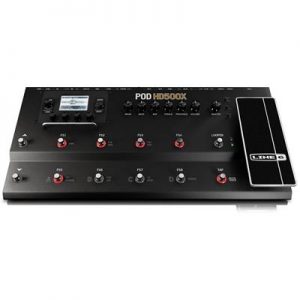 If you are tired of purchasing a dedicated pedal for each effect and the mess this creates on your pedalboard, it might be a good option to go for a multi-effects processor. It is hard to articulate how much it simplifies the setup and how much money it can save. This unit combines numerous effects in a single body and allows you to be as adventurous as you want. A multi-effects pedal is basically everything you ever wanted and a bit more. It is not easy to tweak and control, however, once you nail all the settings, you will have an almighty beast right at your feet. It offers versatility, flexibility and convenience. What else could you ask from a single device?
If you are tired of purchasing a dedicated pedal for each effect and the mess this creates on your pedalboard, it might be a good option to go for a multi-effects processor. It is hard to articulate how much it simplifies the setup and how much money it can save. This unit combines numerous effects in a single body and allows you to be as adventurous as you want. A multi-effects pedal is basically everything you ever wanted and a bit more. It is not easy to tweak and control, however, once you nail all the settings, you will have an almighty beast right at your feet. It offers versatility, flexibility and convenience. What else could you ask from a single device?
Modern units set such a high bar when it comes to the sound quality and overall performance, that it is hard to win the name of the best multi-effects pedal. Even though it is arduous, several brands still manage to accomplish this task. How exactly, you might wonder… By expanding their vision and thinking out of the box, that is how. But still, what makes up a great multi-effects processor? The answer to this question is multifarious and combines a number of audio effects and amp simulations, tone-shaping options, onboard presets loopers and tuners. If a single device is equipped with all of these features, has robust chassis and performs perfectly in every situation, it can easily be called the best one. It is rather easy to get triggered by the amount of effects and amp simulations, however, the number is not the most important determinant here. You have to make sure that they are usable, accentuate your sound and improve its properties. If this requirement is satisfied, then you can go on being picky and dig even deeper. A multi-effects processor is a great tool for practicing, especially for beginners. However, professionals will benefit from it as well. Just go out there and try it and you will know what I am talking about.
As you read the label of this part of the article, you might start wondering, who needs a pedalboard and why are we even talking about it. Well, the answer is quite simple, my friend. Everybody needs it and here is why: a pedalboard turns the organization of your pedals into an enjoyable process. It combines the convenience and ease of usage and substantially reduces the time spent on setting up stompboxes. By placing all your pedals on your pedalboard, you can easily carry them around mounted on the surface and have them ready anytime. Plus, it makes sure that nothing flies off the stage into the universe or right in the face of your fans. In short, if you find the best guitar pedalboard, do not let go of it.
If you still think that this piece of equipment is an unnecessary waste of money, think twice as I list down all the properties you should look for. First and foremost, you should watch out for Durability and Build Quality. These two are important with any unit but they are even more significant when it comes to pedalboards. They must be able to undertake heavy stomping, hold everything in place and withstand numerous pedals. If you have frequent gigs, go for aluminum, plywood or hard plastic material. Second of all, you must always consider the Size. Depending on the amount of pedals you own, you will need various pedalboards. On the whole, they can hold 4 to 12 stompboxes. Last but not least, you have to choose between Powered and Unpowered variations. The first one implies that it comes with power supply and all the needed cables, while the second indicates that it provides merely the surface for your pedals. They both have their pros and cons, plus it depends on what you are looking for. But one thing is clear as day: you need a pedalboard in your gear and you need it right now!
 I think we have praised guitar pedals enough. Now it is time to go low, way lower than you’d think. Yes, we are now talking about bass pedals, namely distortion. This is probably my favorite one. There is something very special about distorted bass. It sounds dirty, beautiful and mind-blowing at the same time. This effect works perfectly with your bottom end, accentuates its best properties and makes it shine. If you dare to play bass solos, you have to give distortion a shot. It will allow you to create unique pieces and stand out in the mix. If you find the best bass distortion pedal, it will be the most powerful addition to your gear and will quickly turn into a secret weapon.
I think we have praised guitar pedals enough. Now it is time to go low, way lower than you’d think. Yes, we are now talking about bass pedals, namely distortion. This is probably my favorite one. There is something very special about distorted bass. It sounds dirty, beautiful and mind-blowing at the same time. This effect works perfectly with your bottom end, accentuates its best properties and makes it shine. If you dare to play bass solos, you have to give distortion a shot. It will allow you to create unique pieces and stand out in the mix. If you find the best bass distortion pedal, it will be the most powerful addition to your gear and will quickly turn into a secret weapon.
The most important question that is asked rather frequently is if you need dedicated pedals for bass. Answer to this is set in stone: if you want your sound to be professional, then you have to splurge on distortion pedal that is specifically designed for bass. Such kind of unit knows exactly how to treat low frequencies. It attenuates them and adds effect without depriving your sound of integrity and definition. You could still employ guitar pedals with bass, however, some of them might completely ruin your tone. Bass distortion pedals are quite easy to control, however, there is one simple rule you must follow: do not get overboard with gain. It will assimilate your sound to that of others in your band and make it hard to stand out in the mix. The solution to this issue is a Blend knob. It will mix your original bottom-end with affected signal and, therefore, accentuate that blissful bass of yours. That is all you need for creating the most ethereal bass distortion. In my book, when it comes to your sound, you do not have the right to be parsimonious, just grab this unit and let the world know who is the real king of bass.
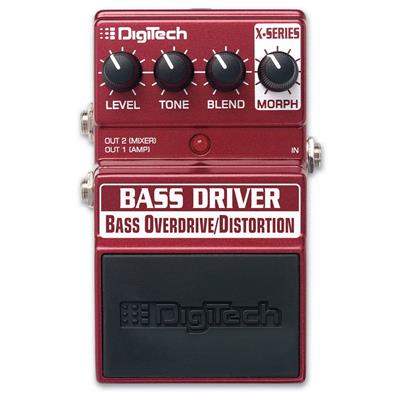 Bass overdrive is very similar to its guitar variation. It distorts your sound subtly and offers warm, vintage tones. This effect is for those who like small amount of dirt but do not want to get too crazy. Plus, it can be more flexible than its heavier siblings and provide you with various sonic possibilities. Bass overdrive has a unique nature that cannot be compared to anything else. It is saturated with mild girth, sweetness and perfection. This effect can accentuate the nature of bass beautifully and awaken those creative juices.
Bass overdrive is very similar to its guitar variation. It distorts your sound subtly and offers warm, vintage tones. This effect is for those who like small amount of dirt but do not want to get too crazy. Plus, it can be more flexible than its heavier siblings and provide you with various sonic possibilities. Bass overdrive has a unique nature that cannot be compared to anything else. It is saturated with mild girth, sweetness and perfection. This effect can accentuate the nature of bass beautifully and awaken those creative juices.
In order to nail the most perfect sound, the best bass overdrive must have a set of needed controls. Let’s start with Level. It gives you the ability to modify the volume of the overall output and makes sure that everything is audible to the audience. Since bass is not a stand-alone instrument, this control will help you match its level to the rest of the band. Then comes the Tone (a.k.a. EQ). This bad boy allows you to balance out various frequencies, accentuate bass and tone down treble. This feature is particularly handy for bass players, because it underlines the nature of your instrument and adds definition to your sound. The next is, of course, Gain (Drive). This control is responsible for producing the overdrive. Along with thickening up your signal and enhancing its strength, gain lets you increase the girth and distort everything even more. It can go from mild to extreme and give you a number of sonic options. Last but definitely not the least, we have the Blend. I have already mentioned how great this control can be but I will reinstate this idea once again. This feature enables you to mix your dry and affected signals and therefore increase bass presence. Some models might come with additional tweakable parameters, however, the ones I have discussed are the basics to any pedal and will give you a great deal of control no matter what.
 We have already discussed how amazing guitar compressors can be. They even out your sound perfectly and provide you with a smoother, more professional sound. The same rules apply when it comes to bass compressor pedals, except for the fact that they are even more useful for the said instrument. Due to the specific characteristics of bass, some playing techniques may result in unbalanced output. Plus, low-end may sometimes fade out and lose its integrity. Bass compressor pedal will not let that happen and will attenuate the bottom-end, while toning down squeaky high-end frequencies. This way the nature of bass will be more distinctive and easily audible for the audience. You should not get overboard, though. Applying too much compression to your signal might deprive your sound of dynamics and texture. And that might be exactly what you were going for. Spend as much time as you can experimenting with the pedal and eventually you will get the hang of it.
We have already discussed how amazing guitar compressors can be. They even out your sound perfectly and provide you with a smoother, more professional sound. The same rules apply when it comes to bass compressor pedals, except for the fact that they are even more useful for the said instrument. Due to the specific characteristics of bass, some playing techniques may result in unbalanced output. Plus, low-end may sometimes fade out and lose its integrity. Bass compressor pedal will not let that happen and will attenuate the bottom-end, while toning down squeaky high-end frequencies. This way the nature of bass will be more distinctive and easily audible for the audience. You should not get overboard, though. Applying too much compression to your signal might deprive your sound of dynamics and texture. And that might be exactly what you were going for. Spend as much time as you can experimenting with the pedal and eventually you will get the hang of it.
There are certain technical words that might confuse you when you take your first look at a compressor pedal. But there is nothing that difficult about them. I will explain most of them in depth and make sure that you understand your device to its core. Let’s start with Threshold. This is a margin, a level at which the effect will take place. Any frequency below (or above) that range will be compressed. Tweaking this control will help you choose exactly what you want to cut off and apply the effect accordingly. The next one is Ratio. This bad boy determines the intensity of the compression. The higher the settings, the heavier this effect will be. Now we have Attack and Release. The former defines how fast the compression will take place, while the latter sets the speed of decompression. One more feature you might come across is Make-up Gain. Due to the circuitry of this device, it tends to drop the overall volume. This is where this parameter comes into play. It regenerates the lost output and returns the volume to its initial settings. If you do not already own the best bass compression pedal, I have no idea what you are waiting for.
 You already know what a chorus pedal is. But the one we have talked about before was made for electric guitar. Things are a bit different when it comes to bass. In order for this effect to operate properly, the unit should be able to recognize the bottom-end perfectly. Bass dedicated one has a special circuit which eliminates that problem and adds the said effect without sabotaging the bass sounds. It splits the signal in two, shifts the phase of one half and leaves the other untouched. Then these two signals are combined and the chorus is created. The ultimate tone is thicker and has the sense of playing multiple instruments (or a 12 string guitar) at once. Some chorus pedals have the ability to add effect only to a specific range of frequencies. For instance, they can alter the pitch of the higher-end while leaving the bottom-end untouched. This further defines your bass and makes it stand out among other instruments in the band. Some can even be utilized for splitting the signal between two amps without too much effort. This proves that bass chorus pedals are extremely versatile and can be employed in many different ways. Units of this ilk typically operate using LFO (low frequency oscillator) circuits, which is the part where the magic happens.
You already know what a chorus pedal is. But the one we have talked about before was made for electric guitar. Things are a bit different when it comes to bass. In order for this effect to operate properly, the unit should be able to recognize the bottom-end perfectly. Bass dedicated one has a special circuit which eliminates that problem and adds the said effect without sabotaging the bass sounds. It splits the signal in two, shifts the phase of one half and leaves the other untouched. Then these two signals are combined and the chorus is created. The ultimate tone is thicker and has the sense of playing multiple instruments (or a 12 string guitar) at once. Some chorus pedals have the ability to add effect only to a specific range of frequencies. For instance, they can alter the pitch of the higher-end while leaving the bottom-end untouched. This further defines your bass and makes it stand out among other instruments in the band. Some can even be utilized for splitting the signal between two amps without too much effort. This proves that bass chorus pedals are extremely versatile and can be employed in many different ways. Units of this ilk typically operate using LFO (low frequency oscillator) circuits, which is the part where the magic happens.
If you are considering purchasing the best bass chorus pedal, then you have to be meticulous and cautious. Read the reviews of each unit, listen to the demos and make the decision accordingly. Chorus is a unique effect, which must not be ruined with a crappy device. Do your research and prove to the world that ‘80s vibes will never be outdated.
 And we have made it to the most rebellious, crushing and dirty effect of all: the fuzz. In combination with bass this bad boy can create the most unworldly sounds that will quickly take you to the gnarly world of extreme sounds. The bass fuzz will become your best friend in no time and stay by your side till the end. This unit detects the lowest of the frequencies, distorts them severely and produces that gritty, growling tone. If you are in search of the best bass fuzz pedal, you will have to consider a lot of things. Just keep on reading to find out how to make the final decision.
And we have made it to the most rebellious, crushing and dirty effect of all: the fuzz. In combination with bass this bad boy can create the most unworldly sounds that will quickly take you to the gnarly world of extreme sounds. The bass fuzz will become your best friend in no time and stay by your side till the end. This unit detects the lowest of the frequencies, distorts them severely and produces that gritty, growling tone. If you are in search of the best bass fuzz pedal, you will have to consider a lot of things. Just keep on reading to find out how to make the final decision.
Price is the factor that interferes with our choices a lot. Depending on your budget, you will be able to purchase different sorts of pedals. If you are willing to splurge, then you will get everything in one package: durable body, amazing sound quality and numerous features. However, if you do not want to break the bank, you will have to go for a more affordable option. Luckily, you can find some amazing pedals in lower price range as well. They will have the same sound quality, but might not last you longer than their higher-end siblings. Now, if you do not care about the price and you are super meticulous about your sound, you should definitely check out what features each pedal has to offer. Apart from basic Level, Gain and Fuzz controls, you will need some tone shaping options. This will allow you to tailor your sound to your preferences and eliminate any unwanted tones. And let’s not forget the Blend knob. As with bass overdrive pedals, this feature will be handy with bass fuzz as well. And finally, you have to consider the size of the unit. This one is probably the least significant, however, if you have an overcrowded pedalboard, you will have to pay attention to the proportions of the device. I know that this seems like too much to look out for, however, it is worth it. The best bass fuzz pedal deserves your time and appreciation.
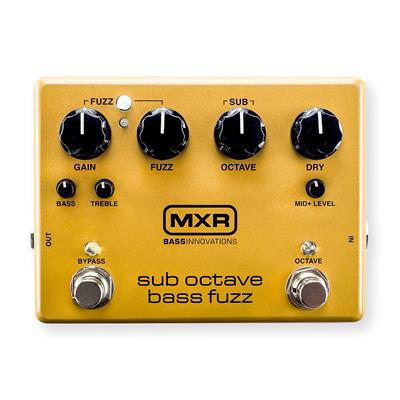 As you already know, an octave is an effect that splits or doubles the original signal. They both mix the dry tone with its synthesized version, however, the former produces the sound that is an octave higher than the original, while the latter creates an octave lower version. I have outlined the importance of owning the bass dedicated pedals couple of times now, but this is even more significant with an octave pedal. Since this effect can go even lower than the original bass sound, if the unit does not know how to treat those lower frequencies, your sound might get simply inaudible. You have to be careful with an octave up too, because if you go too high, you will lose your bass and get something resembling the electric guitar. I am sure you do not want that.
As you already know, an octave is an effect that splits or doubles the original signal. They both mix the dry tone with its synthesized version, however, the former produces the sound that is an octave higher than the original, while the latter creates an octave lower version. I have outlined the importance of owning the bass dedicated pedals couple of times now, but this is even more significant with an octave pedal. Since this effect can go even lower than the original bass sound, if the unit does not know how to treat those lower frequencies, your sound might get simply inaudible. You have to be careful with an octave up too, because if you go too high, you will lose your bass and get something resembling the electric guitar. I am sure you do not want that.
When searching for the best bass octave pedal, you have to choose between analog and digital variations. The former has its own distinctive sound that is beloved by so many musicians. Analog octave has its unique characteristics that cannot be substituted by any other device. However, pedals of this ilk tend to be monophonic (they cannot detect complicated chords) and have rather poor tracking. The digital pedals, however, are way more flexible. Due to the electronic processing of the signal, they can discern even the most complex chords. Plus, they can create both octave up and down, which adds up to their versatility. Regardless of these benefits, many bass players still prefer analog pedals over the digital ones. It is completely up to you. I would recommend trying out both variations and choosing the best one accordingly. After all, we all have different taste and requirements.
![]() A vocal processor is an electronic unit that equalizes your vocals, adds effects to it, and harmonizes it with your instrument. It helps you smooth out your performance as a whole and make it more elaborate. This device offers studio-quality tone-shaping right at your fit and promises to take your game to a whole new level.
A vocal processor is an electronic unit that equalizes your vocals, adds effects to it, and harmonizes it with your instrument. It helps you smooth out your performance as a whole and make it more elaborate. This device offers studio-quality tone-shaping right at your fit and promises to take your game to a whole new level.
There is a lot of controversy regarding vocal processors. Many purists argue that using them is cheating and you do not have the right to employ them in your performance. But this is not true. The musical world is open-minded and it accepts any sort of interference with your sound. Let’s be real, if you have horrible vocals, there is no device that can help you. A vocal processor will just amplify your skills and shape them to perfection. Plus, it will allow you to add certain effects to your voice and sound like male/female, a radio, a robot and basically anything you can think of. This way your performance will be memorable for the crowd and capture the hearts of the audience. The best vocal processor will give you the opportunity to sound like a band and create something extremely distinctive. It can also be utilized as a preamp. This way your mic will not ruin your vocals and you will sound perfect no matter what. The majority of the models offer loopers as well, which gives you even more possibilities. You can simply record the piece you perform and play it back repeatedly. Vocal processors have a lot to offer and can be too good to be true. The main thing is to stop listening to what certain people have to say. Music is the most accepting phenomenon in this world and nobody has the right to ruin that. Just embrace your creativity and let your skills occupy the whole universe.
Conclusion
Huh, what a journey! We had a lot of things to discuss, did not we? I hope this guide is comprehensive enough to give you the knowledge you will need. It contains a lot of information, which might be a bit overwhelming to process. However, it will sink gradually and help you on your way to finding the perfect sound. The best effects pedal is the one that satisfies all your desires, gives you the feeling of fulfillment and makes your heart bit faster. No matter what effects you employ, if you are passionate about your music, the audience will notice. Experiment with everything, try out new things, and do not be afraid to fail. After all, every defeat is the motivation to keep trying. Be adventurous, because sound can be as versatile as your heart desires. The main thing is to never stop moving forward and improving yourself. Good luck!

